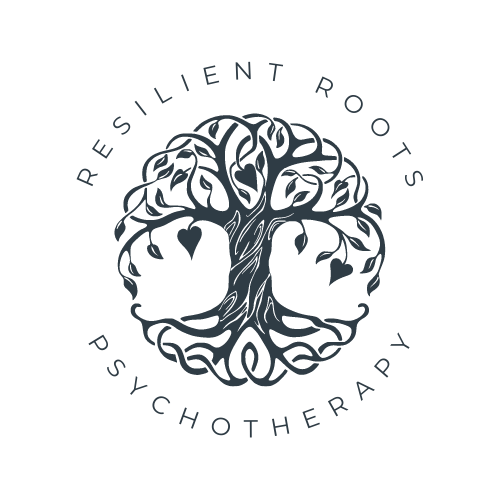What Really Happens During a Hypnotherapy Session? A Therapist’s Perspective
Hypnotherapy has been surrounded by mystery, misinformation, and pop-culture myths for decades. Many people associate hypnosis with mind control, stage performances, or losing complete awareness. In reality, clinical hypnotherapy is a structured and evidence-based process used to help clients reprogram unhelpful patterns in the subconscious mind. If you've ever wondered what really happens during a hypnosis session, this blog will break down the process from start to finish, dispel common myths, and explain how hypnotherapy can be a powerful tool for change.
What is Hypnosis?
Hypnosis is a focused state of deep relaxation and heightened suggestibility. It is not sleep, unconsciousness, or a loss of control. Instead, it allows individuals to access the subconscious mind, where deeply ingrained beliefs, habits, and emotional responses are stored. In this state, people are more receptive to positive suggestions that align with their goals, whether that be reducing anxiety, overcoming phobias, breaking bad habits, or improving self-confidence.
Neuroscience shows that hypnosis shifts brain activity from the analytical, critical-thinking beta waves of the conscious mind to the slower alpha and theta waves. These states are associated with deep relaxation, creativity, and memory consolidation. In this state, the brain becomes more adaptable to new ideas, making hypnosis an effective tool for therapeutic change.
The Structure of a Hypnosis Session
A clinical hypnosis session is carefully structured to ensure effectiveness and comfort. While every hypnotherapist may have their own approach, most sessions follow a predictable flow:
1. Initial Consultation and Goal Setting
Before hypnosis begins, the therapist conducts an intake session to understand the client’s goals, concerns, and personal history. This step is crucial in determining the most effective approach. Common areas of focus include:
Emotional Well-being:
Anxiety and stress management
Trauma processing (e.g., childhood trauma, PTSD, past negative experiences)
Confidence building (e.g., social anxiety, imposter syndrome, performance anxiety)
Behavioral Changes:
Smoking cessation
Weight management (e.g., emotional eating, sugar cravings, portion control)
Overcoming procrastination and increasing motivation
Enhancing focus and productivity (e.g., ADHD, study habits, workplace efficiency)
Physical and Cognitive Improvements:
Sleep improvement (e.g., insomnia, trouble falling or staying asleep, nightmares)
Chronic pain management (e.g., migraines, fibromyalgia, tension headaches)
Phobia reduction (e.g., fear of flying, fear of public speaking, fear of heights)
Hypnotherapy can also be applied to:
Sports performance enhancement: Helping athletes develop mental resilience and focus
Childbirth (hypnobirthing): Reducing pain perception and anxiety during labor
Public speaking and performance anxiety: Boosting confidence and reducing stage fright
IBS symptom management: Addressing stress-related digestive issues through relaxation techniques
Addiction recovery support: Reinforcing positive coping mechanisms and reducing cravings
The therapist will also address any fears or misconceptions about hypnosis to ensure the client feels safe and in control.
2. Induction: Entering a Hypnotic State
Once the session begins, the therapist guides the client into a state of deep relaxation through an induction process. This can involve:
Progressive relaxation (systematically relaxing the body from head to toe)
Guided visualization (imagining a peaceful scene or experience)
Focused breathing techniques
Inductions are designed to quiet the conscious mind and bring the client into a receptive, trance-like state. Most people describe this state as feeling deeply relaxed, similar to the sensation of being engrossed in a daydream.
3. The Therapeutic Work
Once in hypnosis, the therapist uses various techniques based on the client’s needs:
Direct Suggestions: Positive affirmations and instructions to reinforce desired changes (e.g., “You feel calmer and more confident in social situations.”)
Guided Imagery: Mental exercises that help reframe fears and limitations (e.g., visualizing success and overcoming challenges)
Regression Therapy: Revisiting past memories to uncover and reframe deeply ingrained beliefs
Parts Therapy: Dialoguing with different aspects of the subconscious mind to resolve internal conflicts
The client remains aware and in control throughout, able to reject any suggestion that does not resonate with them.
4. Emerging from Hypnosis
Once the therapeutic work is complete, the therapist gently guides the client back to full awareness. This process usually involves counting up from one to five or using other grounding techniques. Clients often report feeling refreshed, clear-headed, and deeply relaxed after a session.
Debunking Common Myths About Hypnosis
Myth #1: You Can Be Controlled or Made to Do Something Against Your Will
Fact: Hypnosis is not mind control. Clients remain fully aware and in control at all times. No one can be forced to act against their morals or values. Many movies and stage hypnosis acts exaggerate this concept, creating unnecessary fear around hypnotherapy.
Myth #2: You Might Get Stuck in Hypnosis
Fact: It is impossible to get "stuck" in hypnosis. If left undisturbed, a person in a trance state would either wake up naturally or fall asleep.
Myth #3: Only Certain People Can Be Hypnotized
Fact: Almost everyone can experience hypnosis if they are open to it. The depth of trance varies, but effectiveness does not depend on going into an ultra-deep state.
Myth #4: Hypnosis Erases Memories or Creates False Ones
Fact: While hypnosis can help uncover subconscious material, it does not erase memories. Ethical hypnotherapy practices ensure that suggestions align with the client’s real experiences and personal integrity.
What to Expect After a Hypnosis Session
Clients often leave a hypnosis session feeling lighter, clearer, and deeply relaxed. While some may notice immediate changes, for most, hypnosis works best as a cumulative process. The subconscious mind absorbs suggestions over time, reinforcing desired changes with repeated sessions and practice.
Common post-session experiences include:
Heightened Sense of Calm and Focus
After a hypnotherapy session, many people feel an increased sense of calm and clarity. This comes from the deep relaxation achieved during the session, which reduces stress and anxiety. The focus gained can also carry over into daily life, making it easier to concentrate on tasks and respond more calmly to challenges or distractions.Increased Self-Awareness
Hypnotherapy fosters a deeper connection to your thoughts and feelings. As you explore the subconscious, new insights into beliefs, past experiences, and emotional triggers can surface. This increased self-awareness makes it easier to identify patterns and make more conscious decisions, leading to personal growth and a greater understanding of yourself.Natural Shift in Behavior or Thought Patterns
One of the key goals of hypnotherapy is shifting negative behaviors or thought patterns. After a session, many people notice a natural change in how they react to certain situations. This can show up as more positive self-talk, healthier habits, or a more balanced emotional response. Over time, these changes become ingrained, creating lasting improvements in mindset and behavior.Vivid Dreams as the Subconscious Integrates New Insights
As the subconscious processes the suggestions made during the session, vivid or symbolic dreams can occur. These dreams can be a way for the mind to integrate new insights or healing, often bringing unconscious thoughts, fears, or desires to the surface. They can offer additional opportunities for reflection and understanding.Increased Emotional Resilience
Hypnotherapy can help release emotional blockages, which often results in increased emotional resilience. Clients report feeling better equipped to handle stress, anxiety, and challenges that previously triggered overwhelming emotions. This sense of emotional strength allows for a more confident approach to difficult situations, with the knowledge that there are tools to manage them.Improved Sleep Quality
Many experience improved sleep quality after hypnotherapy. The relaxation induced during the session can help ease insomnia, calm racing thoughts, and promote a more restful state. With the subconscious more at peace, sleep can become easier, deeper, and more restorative.Physical Relaxation
Along with emotional and mental relaxation, hypnotherapy can induce physical relaxation. Tension in the body, especially in areas like the shoulders, neck, and jaw, can dissolve as the body enters a state of calm. This physical relaxation can persist after the session, leaving you feeling lighter and more at ease.Stronger Mind-Body Connection
Through hypnotherapy, the connection between the mind and body often becomes stronger. Clients notice a heightened awareness of how thoughts and emotions affect physical well-being. This awareness makes it easier to recognize when stress or anxiety is taking a toll on the body, leading to more mindful care and attention to overall health.A Sense of Motivation or Clarity
After a hypnotherapy session, many feel a new sense of motivation or clarity. This often comes from uncovering subconscious blocks or gaining new insights that weren’t accessible before. With this new awareness, there’s a greater sense of empowerment and the motivation to take action toward personal goals or make positive changes.
To maximize the benefits of hypnotherapy, clients can practice self-hypnosis, listen to guided recordings, or journal their experiences to track progress.
Final Thoughts
Hypnosis is not magic, nor is it a passive quick fix. It is a tool that allows individuals to access the power of their subconscious mind and create meaningful change. With the right mindset and the help of a hypnotherapist, hypnotherapy can be a highly effective method for overcoming challenges and achieving personal growth.
Interested in experiencing hypnotherapy for yourself? Click the link below to book a consultation and discover how hypnosis can support your personal and mental health goals.

